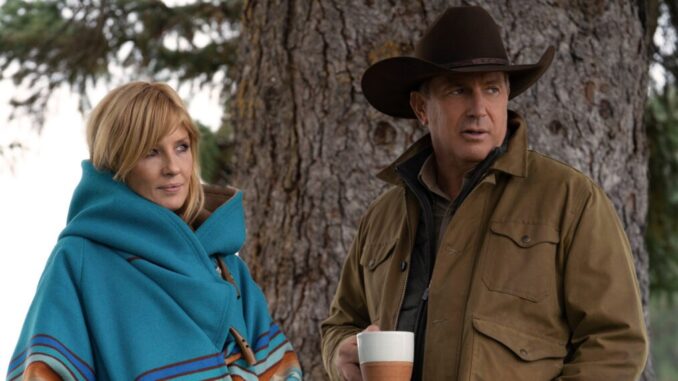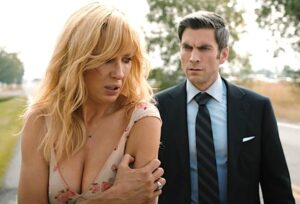
How Yellowstone Sparks Controversy in Montana’s Communities
The hit TV series Yellowstone has captured the imaginations of viewers across the globe with its gripping family drama and stunning portrayal of Montana’s untamed landscapes. Starring Kevin Costner as the patriarch of the powerful Dutton family, the series has brought national attention to Big Sky Country. However, behind the allure of its Hollywood sheen, Yellowstone has sparked heated debates in Montana, creating divisions within local communities.
A Double-Edged Sword for Montana’s Tourism
One of the most immediate effects of Yellowstone has been a surge in tourism. Fans of the show flock to Montana to experience the rugged beauty of the landscapes showcased in the series. Local businesses, from ranches to tour operators, have seen an influx of visitors eager to live out their Western fantasies.

“The show has put Montana on the map in a way we’ve never seen before,” said Jenna Thompson, owner of a Bozeman-based adventure outfitting company. “We’ve had people come in asking to see the spots where certain scenes were filmed.”
However, this surge in tourism hasn’t been universally celebrated. Some residents feel the influx of visitors disrupts the peace and authenticity of Montana’s rural communities. “It’s a double-edged sword,” said Bill Harding, a rancher near Livingston. “The extra business is nice, but the crowds and traffic are starting to feel overwhelming.”
Rising Property Prices and Changing Communities
The popularity of Yellowstone has also fueled a boom in real estate, as wealthy out-of-state buyers look to invest in their own slice of Montana paradise. Properties near filming locations have skyrocketed in value, pricing out many locals.
“People are coming here because they’ve fallen in love with the idea of Montana they see on TV,” explained Emily Carter, a Missoula-based real estate agent. “But the reality is, it’s making it harder for locals to afford to live here.”
Longtime residents are concerned about how these changes are reshaping their communities. The influx of affluent newcomers has led to the gentrification of small towns, altering their character and creating tensions between locals and new arrivals. “We’re losing the sense of community that makes Montana special,” Harding added.
Cultural Misrepresentation and Stereotypes
Another point of contention is how Yellowstone portrays Montana and its people. While the show has been praised for its breathtaking cinematography and compelling storytelling, some Montanans feel it perpetuates stereotypes about ranch life and Western culture.
“The show makes it seem like everyone here is either a cowboy or involved in some kind of land dispute,” said Sarah Jenkins, a Helena-based writer. “It’s a very narrow view of what life in Montana is really like.”
Others argue that the show’s dramatic conflicts and gritty tone overshadow the day-to-day realities of living in Montana. “There’s so much more to our state than what you see on Yellowstone,” Jenkins added. “We’re a diverse community with a rich history and culture that’s often overlooked.”
Environmental Concerns Amid Increased Exposure
With Yellowstone bringing global attention to Montana’s natural beauty, some conservationists worry about the environmental impact of increased tourism and development. Popular filming locations, such as the Paradise Valley and the Bitterroot Range, have seen a rise in foot traffic, leading to concerns about preserving these fragile ecosystems.
“We love that people want to experience Montana’s beauty, but we need to ensure it’s done responsibly,” said Laura McKinney, a conservationist with a local nonprofit. “The last thing we want is for these places to be loved to death.”
Local organizations are working to balance tourism with sustainability by promoting responsible travel practices. Initiatives include educating visitors about Leave No Trace principles and encouraging off-season tourism to reduce strain on popular areas.
Bridging the Divide: Opportunities for Dialogue

Despite the controversies, some Montanans see Yellowstone as an opportunity to spark important conversations about the state’s future. Issues like land use, environmental preservation, and the impact of wealth inequality are central to both the show’s narrative and real-life debates in Montana.
“The show has definitely brought attention to some of the challenges we face,” said Governor Greg Gianforte in a recent statement. “Now it’s up to us to use that spotlight to address these issues in a way that benefits all Montanans.”
Community forums and town hall meetings have been organized in several areas to discuss the changes brought about by the show’s popularity. These gatherings aim to foster dialogue between locals, newcomers, and industry stakeholders, with the goal of finding solutions that preserve Montana’s unique identity while embracing its growing visibility.
The Legacy of Yellowstone in Montana
As Yellowstone continues to captivate audiences, its impact on Montana remains a topic of debate. For some, the show represents an opportunity for economic growth and greater recognition of the state’s natural beauty. For others, it’s a symbol of the challenges posed by rapid change and cultural commodification.
“At the end of the day, Yellowstone is a TV show,” said Jenkins. “But the issues it brings up—about land, identity, and community—are very real. How we choose to address those issues will determine what kind of Montana we leave for future generations.”
Whether you’re a fan of the show or one of its critics, there’s no denying that Yellowstone has left an indelible mark on Montana. The challenge now is finding a way to harness its influence for the betterment of the state and its people, ensuring that Big Sky Country remains as awe-inspiring in real life as it is on screen.
